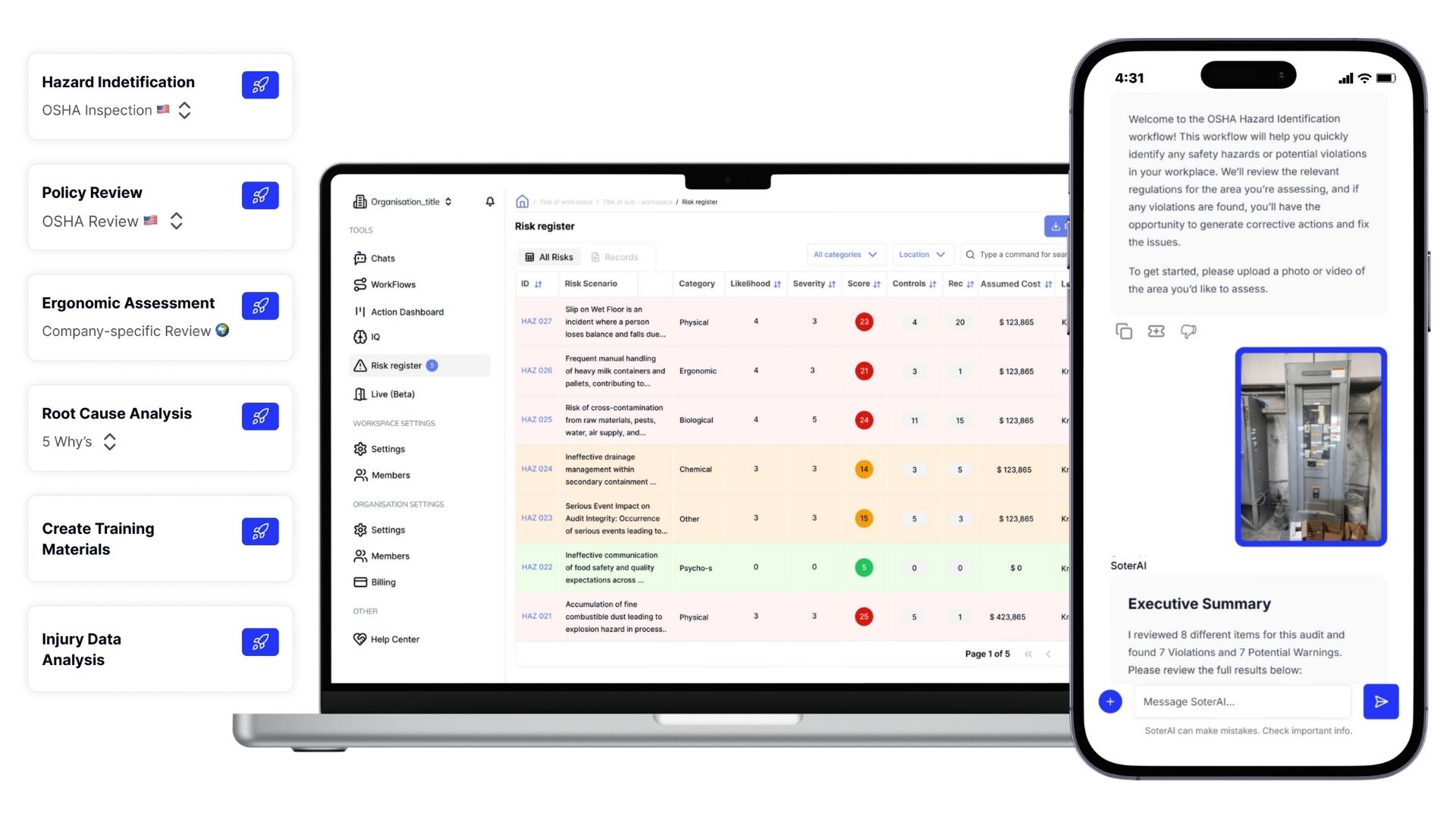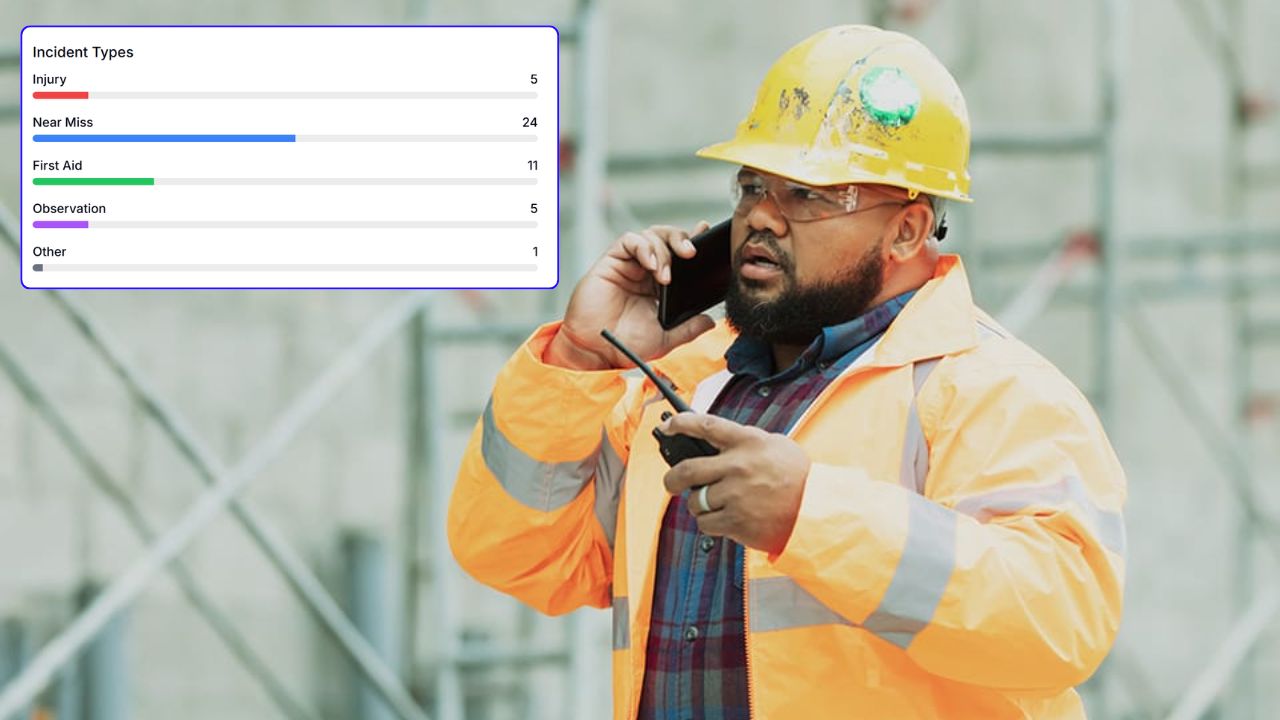Workplace safety is evolving – or at least, it needs to. For years, EHS leaders have diligently collected incident reports, near-miss data, and injury logs. This information tells a story, but it’s always a story about the past. The hard truth? Reacting to yesterday’s incidents won’t prevent tomorrow’s.
The industry knows this. Expectations are shifting. Regulatory bodies demand risk-based management, not just box-ticking compliance. Stakeholders, from employees to investors, look for genuine safety leadership. Yet, despite knowing why a proactive approach is critical, many EHS leaders find themselves stuck, unable to break free from the reactive cycle Matthew Hart described. Why?
Why Relying on Reactive Safety is a Losing Battle
- Lagging Indicators Don’t Prevent: Incident data tells you where you failed. It’s crucial for learning, but useless for predicting the next failure point. Relying solely on looking backward allows hazards to fester until the next, often predictable, incident occurs.
- The Bar is Higher Now: Regulators and stakeholders demand more than just compliance – they expect demonstrable risk management and prevention. Simply reacting isn’t leadership; it’s falling behind.
- The True Cost of Disruption: Every incident carries direct costs (medical, downtime) and hidden ones (morale hits, reputational damage, lost productivity). Proactive safety isn’t just about preventing harm; it’s about protecting business continuity and competitive advantage.
The Real Roadblocks to Proactive Safety (And How to Overcome Them)
If everyone agrees proactive is better, why is it so hard to achieve?
- “That’s How We’ve Always Done It“: Cultural inertia is powerful. Established incident reporting systems feel comfortable, while shifting to predictive, data-driven methods requires significant change – often met with resistance.
- Data Chaos: Safety information is everywhere and nowhere – trapped in spreadsheets, siloed software, different departments. Without a unified view, spotting the leading indicators that signal future risk is nearly impossible.
- Resource Wars: Proactive safety needs investment – in time, tools, and expertise. EHS leaders often fight uphill battles for budget against immediate operational demands.
- Short-Term Blinders: Quarterly targets often overshadow the long-term, compounding benefits of preventing incidents altogether. Justifying investment in prevention requires looking beyond the next reporting period.
Gaining Leadership Buy-In: Moving from Lip Service to Action
Visible, genuine commitment from the top is non-negotiable. Here’s how to make proactive safety a leadership priority:
- Speak Their Language (Business Goals & ROI): Show the clear line from reduced incidents to lower costs, less downtime, and improved productivity. Frame proactive safety as essential risk management, just like financial or operational risk.
- Expose the Hidden Costs: Don’t just talk about direct costs; highlight the ripple effect on insurance, legal fees, brand reputation, and employee retention. Use data (even leading indicators from pilot programs) to show how prevention saves far more in the long run.
- Pilot Programs & Proof: Demonstrate success on a smaller scale. Showcasing how proactive measures prevented a specific incident (or near-miss) provides tangible evidence.
- Make Safety Visible & Accountable: Encourage leaders on site, participating in observations and safety meetings. Tie safety metrics (leading and lagging) to leadership performance reviews. Accountability drives action.
The Role of the Risk Register in Driving Proactive Safety
Shifting from reaction to prevention hinges on identifying and evaluating threats before they cause harm. This requires a clear, dynamic understanding of your risk landscape – something traditional methods struggle to provide.
This is where SoterAI’s AI-powered Risk Register becomes essential. It’s designed specifically to tackle the data chaos described earlier. It doesn’t just store data; it actively processes and understands it.

- Connects the Dots: It ingests data from all your sources – incident reports, audits, inspections, images, videos, system APIs – consolidating fragmented information.
- Real-Time Understanding: Using AI agents, it continuously analyzes this data, identifying hazards, evaluating risk likelihood and severity, and assessing control effectiveness.
- Dynamic Prioritization: Unlike static spreadsheets, the Risk Register adapts in real-time, highlighting the most critical risks needing immediate attention based on current data.
- Clear Communication: It provides a unified, easily understood view of risk across the organization, fostering collaboration and ensuring everyone understands their role.
Practical Steps to Finally Embrace Proactive Safety
- Set the Vision (Lead from the Front): Leadership must champion proactive safety and align it with core business goals.
- Invest in Skills: Train teams in hazard identification, risk assessment, and using data for prevention.
- Adopt Integrated Technology: Leverage platforms like SoterAI to break down silos, automate analysis, and maintain a continuously updated Risk Register.
- Make the Risk Register Central: Use it for regular reviews, cross-functional collaboration, and accountability.
- Shift Focus to Leading Indicators: Measure proactive efforts (near-miss reporting, observation quality, training completion, risk register updates) alongside traditional incident rates.
Break the Cycle, Build the Future
Moving from reactive reporting to proactive prevention is challenging, facing hurdles like culture, budget, and data fragmentation. But sticking with the old way is often a recipe for repeated failure.
The rewards of a truly proactive approach – fewer injuries, engaged employees, operational stability, and safety leadership – are immense. By leveraging tools like SoterAI’s intelligent, continuously updated Risk Register, EHS leaders can finally gain the clarity needed to spot risks early, plan targeted interventions, and genuinely shift from fixing past problems to preventing future ones. When leadership fully commits – through involvement, funding, and accountability – they create an environment where proactive safety becomes the norm, building a resilient organization ready for the future.
Want to see the game-changing capability that makes proactive safety achievable? Building on the concepts discussed here, our upcoming webinar reveals how SoterAI’s intelligent Risk Register transforms complex data into preventative action. Register for “Why Your Safety Program Isn’t Proactive (Yet): Introducing the Game-Changing Risk Register“ on May 15th, 11 AM EST, and learn how to equip your EHS program with true predictive power. Reserve your spot HERE.

